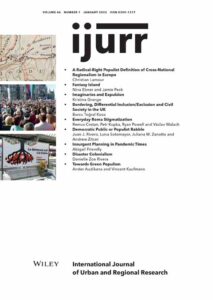From September to November 2015, more than 100,000 people applied for asylum in Sweden. Societal solidarity was unmistakable during this period, but six months later, when the refugees were to be accommodated, the situation had changed. In this analysis of imaginaries of migrants as strangers I scrutinize the city of Gothenburg’s plan to build 1,000 temporary housing units to accommodate refugees. The project failed, resulting in only 57 units being built. In this article I analyse the societal imaginations the project revealed, including those embedded in political and public conflicts of opinion. In an attempt to understand why people sometimes refuse to share social space, I draw on a combination of Sara Ahmed’s theories on the figure of ‘the stranger’ and Julia Kristeva’s theories on how the stranger emanates from an ontological lack. I also outline in the article how different techniques of expulsion can be used to create spatial and temporal estrangement. In the subsequent analysis I demonstrate how practices of exclusion worked to expel migrants from urban development plans in the city of Gothenburg. The conclusion emphasizes the urgent need to scrutinize imaginaries among majority populations, and draws attention to the fact that the ‘foreigner is within us’.

